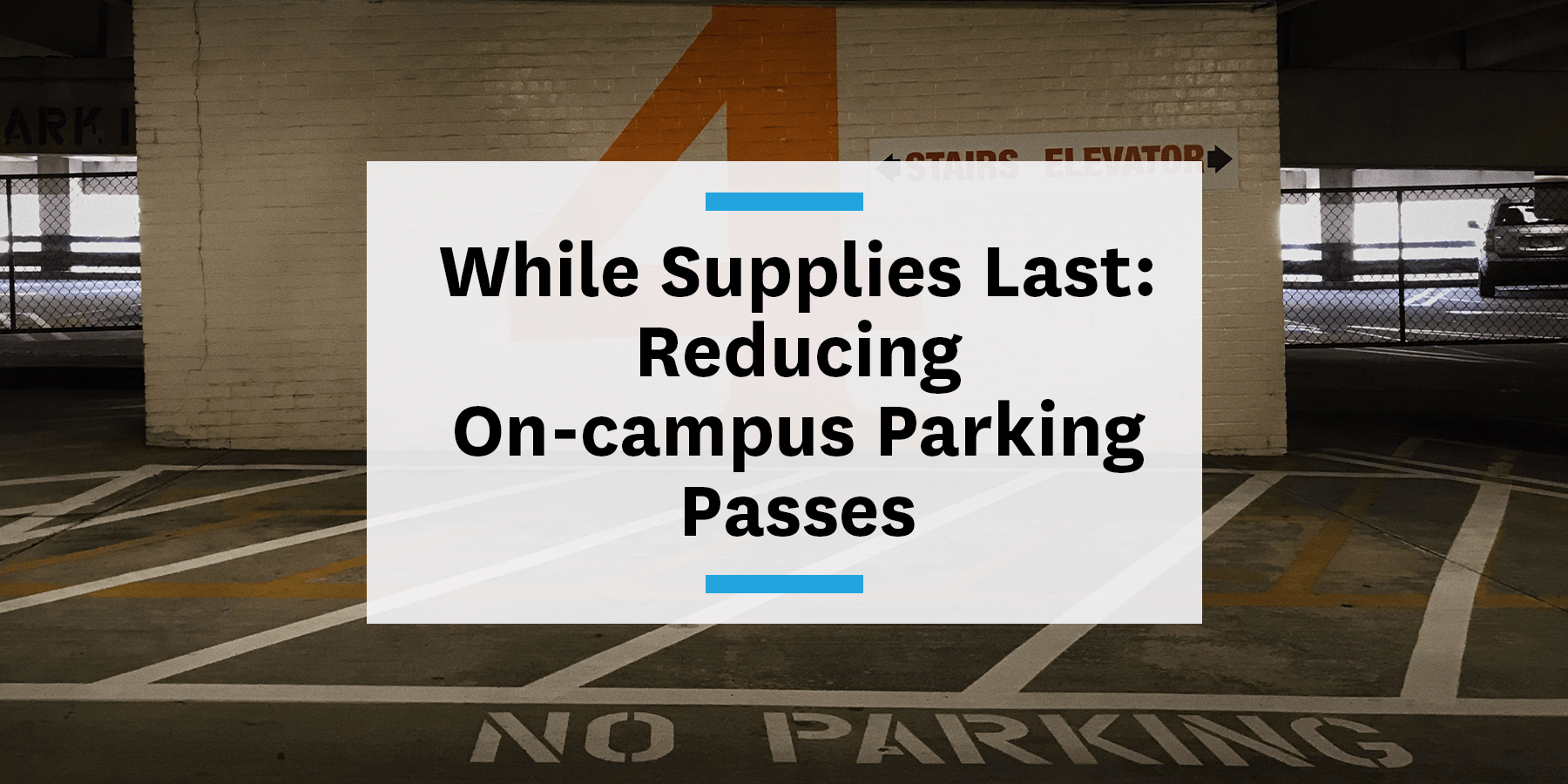Students, staff, and faculty members spend more time than anyone would care to admit looking for any spot – even in the back corner of the lot.

The first thing that comes to mind to fix these parking woes seems like it would be to add more parking, but we actually say the opposite is true. Limiting the number of parking passes available to students, staff, and faculty members is a radical change to provide real results.
That being said, in order to successfully decrease the number of parking passes you’re issuing each semester or year, you’ll have to make up for it in other ways. Here are a few ways you can make it easy for everyone to transition to the new status quo and end up with fewer cars and a happier campus.
Free transit passes
Schools located in metropolitan areas can depend on public transit to get students to and from campus. Obviously paying for staff and faculty transit passes is highly encouraged, but students tend to live closer to campus and thus can often hop on a bus.
American University in Washington, DC, offers metro cards to students for each semester. DC’s metrocards work for both the rail and the bus, giving students access to every part of the city as well as areas in Maryland and Northern Virginia.
Most public transit systems offer discounted rides to students, but to really make a change, universities can go a step further by offering fully subsidized transit passes for students like American University and several others.
Improved campus shuttle
Having a reliable campus shuttle system can also greatly influence a student’s decision on how they get around – especially when parking on campus isn’t an option. Lowering the number of parking passes available to students is a big change, so you’ll need an alternative in place. Most schools have a campus shuttle, but making it reliable and dependable is necessary to constantly move students and staff.
Providing real-time shuttle information should be a given for campus shuttle systems, whether that information comes from an app, screens around campus buildings, or at shuttle stops themselves. Knowing when the shuttle is coming allows riders to feel comfortable making the switch and in doing so moving forward, which is what you’ll need to count on once you remove the option of driving alone.
Scooters and bikes
The growth of scooter and bikeshare popularity is no secret. Riders of all ages have taken to these two-wheeled vehicles for short trips, and universities should be the biggest fans. With another form of transportation available, schools have even more of an opportunity to get students out of their cars.
Both electric scooter and bikeshare companies have university programs to make on-campus implementation as seamless as possible. In addition to providing the hardware (bikes, scooters, and docks) and the software (app), the companies will help with marketing efforts, information distribution, and safety measures.
Replacing car parking with bike parking (in conjunction with lowering the number of parking passes) can lead to higher ridership rates overall. Between six and 20 bikes can fit in a single parking spot! We’re not saying you need to make this switch, we’re just saying it saves a lot of space and time.
Outside the box
A super effective way to get commuters to ditch their cars is paying them not to drive to campus! Parking cash-out programs provide commuters monetary benefits once they swap their cars for more sustainable forms of commuting.
The University of Maryland offers this to staff and graduate students who gave up their campus parking passes. Through the DOTS Parking Cash-Out Program, the school gives $450 to the first 75 staff members and $300 to the first 25 graduate students to give up their parking passes for the 2019-2020 school year. While 100 fewer drivers at a school with more than 40,000 students may not seem like a lot, the program is a huge start to getting cars off the road. If you’ve ever driven on Route 1 in College Park, you’d definitely agree — any number of cars off the road is a plus!
The University of Chicago is another school getting creative in how they limit faculty parking. In order to cut down on their faculty’s commuting distance, the school offers housing assistance. The Employer-Assisted Housing Program offers up to $10,000 for a down payment or up to $2,400 in rental assistance! The program aims to get staff members to move closer to campus, making a car-free commute a real possibility.
Final stop
Real change only comes when you do more than the bare minimum. Every (or most) schools have a scheduled campus shuttle, but switching to an on-demand system can lead to higher ridership. Having bike parking is great, but swapping car parking for bike parking can make students or staff members think twice about driving to campus. It’s when more is done that results come!
Want to learn more about transportation demand management and how companies and organizations are helping change commuting behaviors? Check our resources page!




